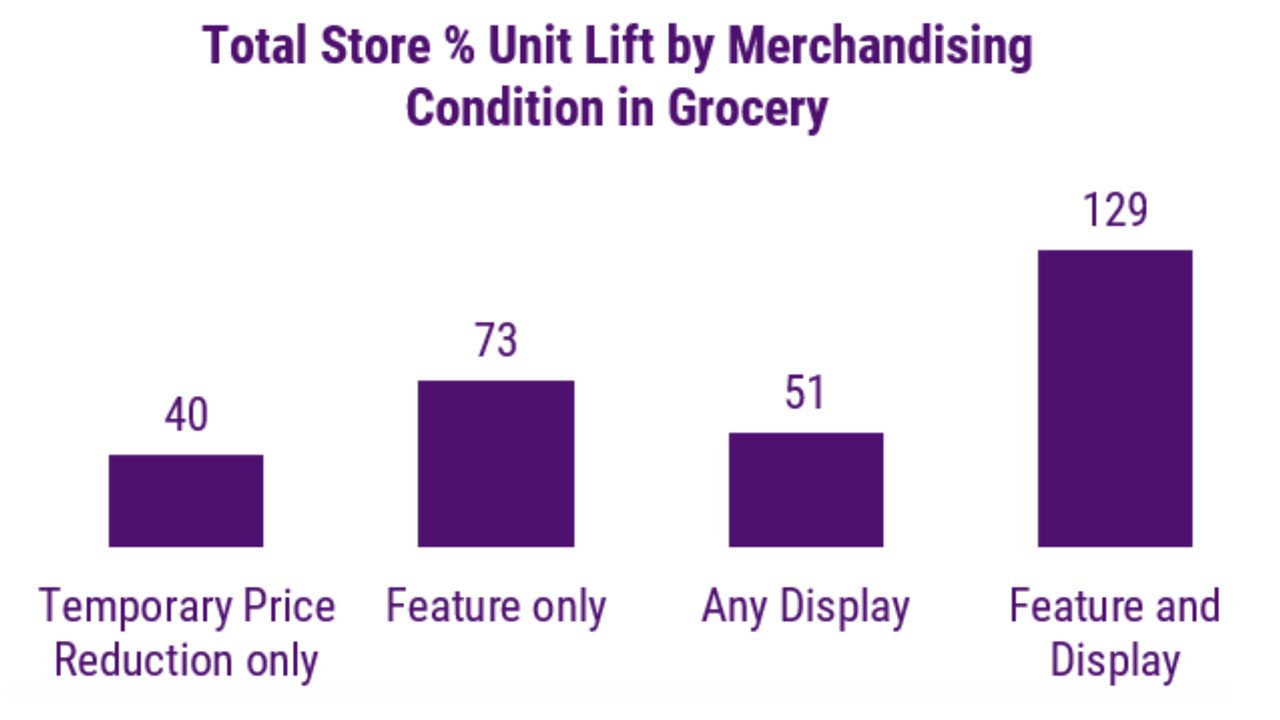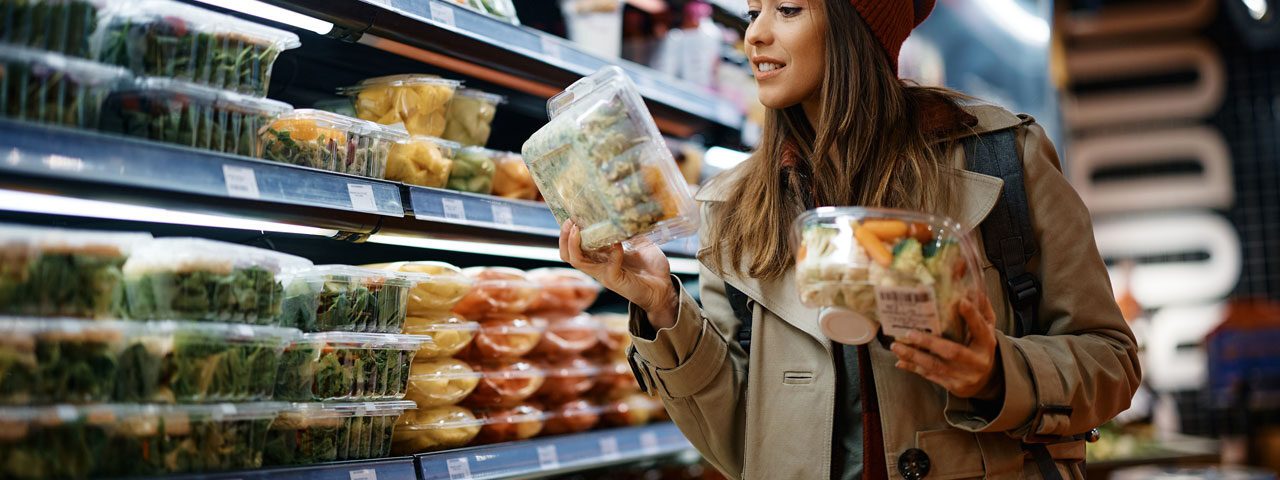Krista Marino
Consultant, Circana In-store Solutions Group
In-store grocery displays have traditionally been an effective driver of sales lift. During the pandemic, the landscape for in-store displays changed to create safer, more open shopping environments. Circana data shows grocery stores have lost an average of 10 displays since 2018, with losses continuing through 2023. Despite a transition to a new normal, those displays have yet to return.
The persistence of this trend may be attributable in part to displays and other promotions not delivering the lift they once did. Rampant grocery inflation of roughly 30% since 2019 has made promotional discounts feel less like a bargain to shoppers compared to pre-pandemic reference prices. Inflation has also left some shoppers unable to afford the multi-purchase requirements of many traditional promos.
Although in-store displays remain an important promotional tool, it’s critical to rethink their role in this changed environment. Below are five points to consider when strategically deploying displays to maximize their impact:
1. Emphasize in-store favorites. Displays should highlight items most likely to be bought during quick trips as total store units per trip are down 4.2% versus a year ago. It’s also best to stay away from e-commerce categories that benefit less from in-store promotions.
2. Boost sales with coordinated promotional execution. Products supported by both a feature and a display produced a strong 129% unit lift in the 52 weeks ending Q3 2023, far outpacing the impact of features or displays alone. Planning a display to match a feature’s ability to draw buyers can maximize the promotional impact on sales lift.

Source: Circana, syndicated data; Total U.S. Grocery; Total Store; 52 weeks ending Q3 2023; lift = percent increase in sales on promotion
3. Reinvent core messaging. As traditional promotions fail to deliver anticipated lifts, retailers and manufacturers should explore new messages focused on meeting consumer needs and bringing shoppers to the store. Options may include inspirational meal ideas using co-promoted categories, convenience-focused messages, or emphasis on hot new consumer trends.
4. Communicate value. As temporary price reductions produce diminished returns, displays remain an effective instrument for highlighting value-focused and underutilized products to cash-strapped customers. Private label products, for example, have gained dollar share as shoppers seek value. But display support for these products hasn’t kept pace across many categories.
5. Focus on Q1 for securing display locations. Displays established in Q1 are more likely to stay through Q2 and Q3, making this consideration especially important for categories that do well during the spring and summer months.
As display count shrinks, CPG manufacturers and retailers must work together to maximize the productivity of those that remain. Fine-tuning the messaging, assortment, and execution are all critical for strengthening this still-important in-store promotional tool. Adopting a data-driven approach to displays matters more now than ever.
Get insights straight to your inbox





